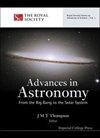基于集成卷积神经网络的恒星光谱自动分类
IF 1.2
4区 物理与天体物理
Q3 ASTRONOMY & ASTROPHYSICS
引用次数: 2
摘要
大型巡天望远镜产生了包括光谱在内的大量天文数据。必须采用机器学习方法来自动处理这些望远镜获得的光谱数据。应用深度学习对恒星光谱进行分类是高维天体光谱自动分类的一个重要研究方向。本文设计了一种鲁棒集成卷积神经网络(ECNN),并将其应用于提高斯隆数字巡天大质量恒星光谱的分类精度。我们设计了6个分类器,分别由6个不同的卷积神经网络(CNN)组成,以识别DR16中的光谱。然后,根据不同信噪比下光谱的交叉熵检验误差,采用集成学习的方式对不同分类器的结果进行整合,提高分类效果。实验结果证明,我们的一维ECNN策略在恒星光谱分类任务中准确率达到95.0%,超过了经典的主成分分析和支持向量机模型的准确率。本文章由计算机程序翻译,如有差异,请以英文原文为准。
Automated Stellar Spectra Classification with Ensemble Convolutional Neural Network
Large sky survey telescopes have produced a tremendous amount of astronomical data, including spectra. Machine learning methods must be employed to automatically process the spectral data obtained by these telescopes. Classification of stellar spectra by applying deep learning is an important research direction for the automatic classification of high-dimensional celestial spectra. In this paper, a robust ensemble convolutional neural network (ECNN) was designed and applied to improve the classification accuracy of massive stellar spectra from the Sloan digital sky survey. We designed six classifiers which consist six different convolutional neural networks (CNN), respectively, to recognize the spectra in DR16. Then, according the cross-entropy testing error of the spectra at different signal-to-noise ratios, we integrate the results of different classifiers in an ensemble learning way to improve the effect of classification. The experimental result proved that our one-dimensional ECNN strategy could achieve 95.0% accuracy in the classification task of the stellar spectra, a level of accuracy that exceeds that of the classical principal component analysis and support vector machine model.
求助全文
通过发布文献求助,成功后即可免费获取论文全文。
去求助
来源期刊

Advances in Astronomy
ASTRONOMY & ASTROPHYSICS-
CiteScore
2.70
自引率
7.10%
发文量
10
审稿时长
22 weeks
期刊介绍:
Advances in Astronomy publishes articles in all areas of astronomy, astrophysics, and cosmology. The journal accepts both observational and theoretical investigations into celestial objects and the wider universe, as well as the reports of new methods and instrumentation for their study.
 求助内容:
求助内容: 应助结果提醒方式:
应助结果提醒方式:


